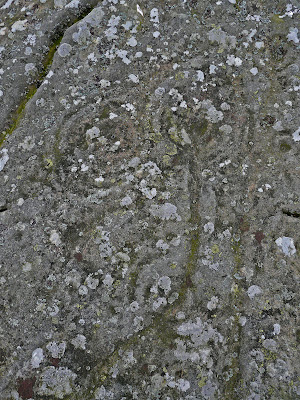Winter was even more evident up here...
 |
| British Summer Time |
...with snow lying thick on the forest tracks. Even so, the air was filled with the songs of Mistle Thrush, Chaffinch and Coal Tit, but we didnt fancy heading out at Easter through the snow. An about turn brought a nice pair of Crossbills perched on top of pines near the car on our return.
We moved off further down hill onto the old railway line that runs over the Edlingham viaduct that is seen in the 'Hobbit' film posters. The route brought us back via Overthwarts farm to Lemmington. There was no lying snow here, but it was icy cold.
Along the line track, a Woodcock flushed from the damp woods, Jays were being typically raucous and a Siskin or two flew over.
In the damp meadows at least 4 male Lapwings were displaying. 4+ Yellowhammers were in song and 3+ Nuthatch were in verge side trees.
A fallen tree over the burn had a couple of fungi to photograph for identification at home.
.jpg) |
| Scarlet Elfcup (quite a good name near a Hobbit viaduct) |
.jpg) |
| Southern Bracket ( I think). |
The biggest surprise, however, had to wait until I got home. Our friends who live nearby in Howick had been alerted by the panicking calls of Buzzards overhead and looked to see a huge raptor gliding over, high, towards the quarry. The Buzzards began to mob the 'eagle' while it circled a couple of times before heading off west and out of sight. That was about 11.20am when I was west of Alnwick. They have seen White tailed Eagle before, on the western isles, and believed this is what the bird was.
They are not birders but are reliable and their fuller description of its behaviour gives me no reason to doubt their sighting. What a gripper for the patch! I've spent the last few hours with one eye skywards but without luck...
















